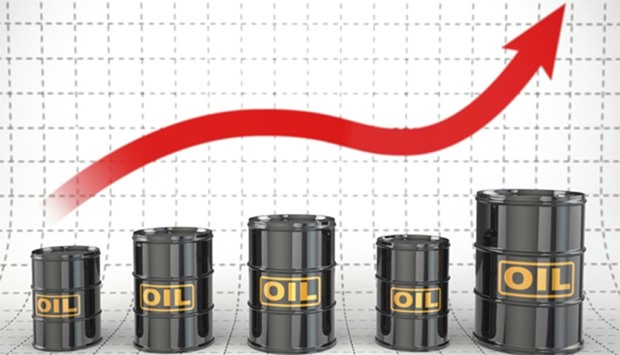* High oil prices will support Qatar’s strong fiscal and external balances in 2022-2023, ratings agency said in a report
High oil prices will support Qatar’s strong fiscal and external balances in 2022-2023, S&P Global said as the ratings agency expects a general government surplus of about 13% of GDP in this year, driven by a sharp increase in revenue.
S&P noted that Qatar's current account will remain in a very strong surplus in 2022-2023, supported by higher prices for its gas exports.
The current account and fiscal deficit, it said will weaken over 2024-2025 because it assumes oil prices will decline to $55 per barrel.
“We expect lesser reliance on short-term banking sector external funding will help reduce the country's external liquidity needs somewhat,” S&P said.
Qatar derives about 40% of its GDP, 80% of government revenue, and 90% of exports from the hydrocarbon sector. This makes the country's credit profile vulnerable to volatility in oil prices, to which most of its long-term gas contracts are linked.
S&P forecasts are based on the expectation that the Brent oil price will average just above $100/b for 2022, $85/b for 2023, and $55/b for 2024 and thereafter.
According to the ratings agency, high oil prices should result in strong government surpluses in 2022-2023, at about 13% of GDP in 2022 and 6% in 2023.
The general government balance includes the central government's budgetary position, and small deficits of about 0.2% of GDP at the social security system level. In the first six months of 2022, the fiscal surplus was recorded at QR47bn, compared with a budgeted deficit of QR8.3bn for the year.
“We estimate a 55% year-on-year rise in hydrocarbon revenue in 2022, with non-hydrocarbon revenue also buoyed by the additional economic activity associated with the World Cup and recovery after the Covid-19 pandemic.
As S&P oil price estimates fall to $55/b, it expects a deficit of about 4% of GDP on average in 2024-2025.
The implementation of value-added tax is a possibility during 2023-2024, but may be delayed amid current inflationary pressures.
“We expect government revenue to continue to be largely driven by gas production and oil prices. We also expect government expenditure to remain broadly flat, at about 30% of GDP over 2022-2025.”
During the four years to 2019, expenditure averaged about 35% of GDP. S&P expectation of additional expenditure restraint over the forecast period through 2025 largely relates to its assumption that government spending on capital projects of about 10% of GDP in 2022 will decline to about 7% of GDP by 2025, given that many large infrastructure projects will have been completed, such as Doha's new metro and tram system.
The government intends to reduce its overall debt-to-GDP ratio and to rebalance the share of foreign currency debt in the total, aiming for 50%, down from 58% in 2021.
“We expect the government's debt-repayment strategy to reduce total general government debt to 27% of GDP by 2025, from 49% in 2022. The government will repay the debt from cash surpluses partly accumulated from past Eurobond issuance. The government's net asset position will remain a rating strength, averaging 110% of GDP over 2022-2025,” S&P said.
S&P projects that the current account will maintain a surplus of 23% of GDP on average over 2022-2023, before moderating to about 3% of GDP over 2024-2025, in line with its oil price assumptions.
The high level of assets accumulated within the sovereign wealth fund, the QIA, will continue to support Qatar's strong external position.
“We estimate that, on average, Qatar's external liquid assets will surpass external debt by about 80% of current account payments in 2022-2025,” S& P said.
Business / Business
Qatar government surplus of 13% of GDP seen in 2022, driven by sharp increase in revenue: S&P

According to the ratings agency, high oil prices should result in strong government surpluses in 2022-2023, at about 13% of GDP in 2022 and 6% in 2023.

